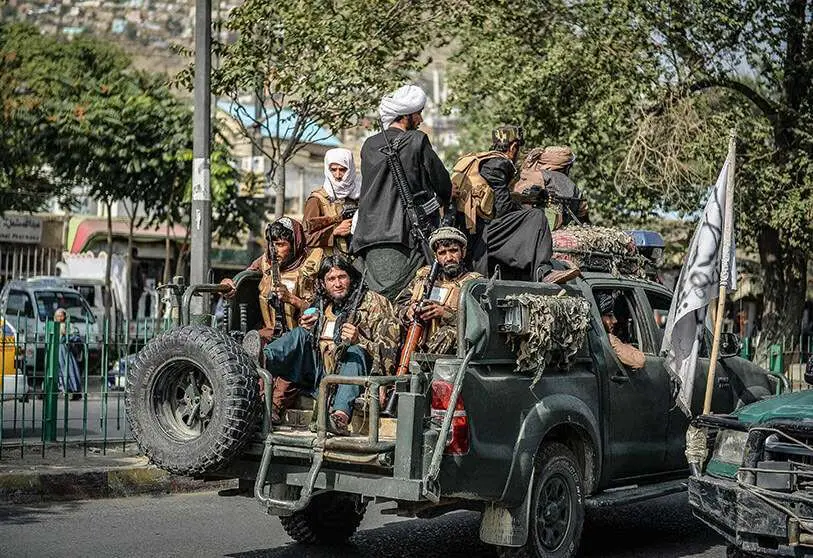Afghanistan: one year under the Taliban

This month marks one year since the Taliban came to power in Afghanistan. Although it is not the first time they have held power - they dominated the country between 1996 and 2001 - it is the most symbolic since it put an end to twenty years of international intervention to defeat them. Such efforts fizzled out in a week, the time it took the Taliban to occupy the entire country in an offensive in which they seized all the provincial capitals, culminating in their entry into Kabul on 15 August. What followed was a chaotic withdrawal by the international community of Afghans who had either worked for foreigners or did not wish to live under Taliban rule. One year on, there are still people left, as was seen last week in Spain with the arrival of 294 Afghans and their families who had collaborated with the Spanish forces.
One year on, we ask ourselves what is the situation in the country: has law and order been re-established, how are the women, has the economic and humanitarian situation improved?
All these questions have one answer: the situation has not improved, but worsened under the Taliban.
Although there is no longer a war in the country, the terrorist threat is still present through the Islamic State of Greater Khorasan, which, ironically, attacks the Taliban, who for many years sowed the same panic that they suffer now. The Afghan branch of the Islamic State has been adept at varying its terrorist tactics from launching suicide attacks to cause maximum harm against civilians in October to suicide bombings against individuals, as seen this month with the death by a suicide bomber hiding explosives in a prosthetic leg of Sheikh Rahimullah Haqqani and the bombing this week of a Kabul mosque. The presence of the Islamic State coupled with the Taliban's unsuccessful attempts to eliminate them raises serious questions about Afghanistan's stability, especially the fear that the Islamic State will take control of the country in the medium to long term. Such a scenario would certainly be a danger for a region where several terrorist groups such as the Pakistani Taliban (TTP) coexist.
Women's rights have regressed. Although the Taliban promised early in their rule not to be as harsh on women as the last time they came to power, they have proved otherwise. Women have to wear burqas, travel with a male escort, and, despite promising otherwise, they have closed the door to women's education. Such measures have resulted in an increase in the sale of girls for marriage, a common practice in the country that will most likely continue due to the worsening Afghan economy, as selling girls for marriage is a way for many families to earn money. This practice and the Taliban's refusal to guarantee women's rights contribute to their isolation from the international community, thus preventing the country from getting the money and humanitarian aid it needs to improve the lives of its citizens.
Humanitarian and economic aid has been paralysed. The $9 billion from the Central Bank of Afghanistan's foreign reserves has not yet been released. Their release is conditional on the international community's recognition of the Taliban government, which is highly unlikely, as the Taliban cannot be trusted to run the country. However, such a rejection worsens the humanitarian situation in a country that was heavily dependent on international aid for its livelihood. Moreover, this year two natural disasters have complicated the situation: one of the worst droughts in recent years has put the food supply of almost 20 million Afghans at risk, and in June a 4.5 magnitude earthquake hit the east of the country, a remote area. To date, we do not know if humanitarian aid has reached the affected area, although it is quite likely that it has not, aggravating an already fragile humanitarian situation.
Finally, the death of al-Qaeda leader Ayman al-Zawahiri last month by a US drone in Kabul raises questions about the possibility that terrorist groups are using Afghanistan as a sanctuary, something the Taliban promised not to do when they signed the Doha agreement in 2020. Such doubts are certain to aggravate the country's international isolation, worsening the humanitarian situation. More US drone strikes against al-Qaeda figures on Afghan soil would only call into question the Taliban's reliability in honouring their commitments, which is currently in doubt. The dilemma is compounded by the fact that the international community will not intervene to prevent al-Qaeda from strengthening in Afghanistan, with the possibility of the country once again becoming a sanctuary for terrorist groups.
A year after the Taliban came to power, the situation in the country has worsened. The terrorist threat persists through the Islamic State of Greater Khorasan, which, through attacks on public figures and institutions, sows terror in the country. Women's rights have regressed, with an increase in the forced sale of minors for arranged marriages. This contributes to the further isolation of the country, which urgently needs the Afghan Central Bank's reserves to get its economy back on track, especially this year as the country suffers from drought and the effects of an earthquake. Finally, the death of the al-Qaeda leader in Kabul raises doubts about the Taliban's ability to honour their commitments, as they pledged to make Afghanistan a country free of terrorist groups. If more al-Qaeda figures are discovered in the country, international isolation is likely to intensify, worsening the humanitarian situation and complicating the disbursement of humanitarian aid.

